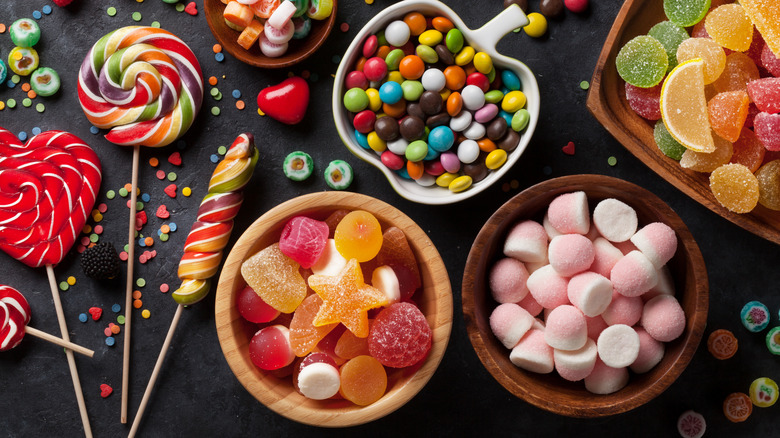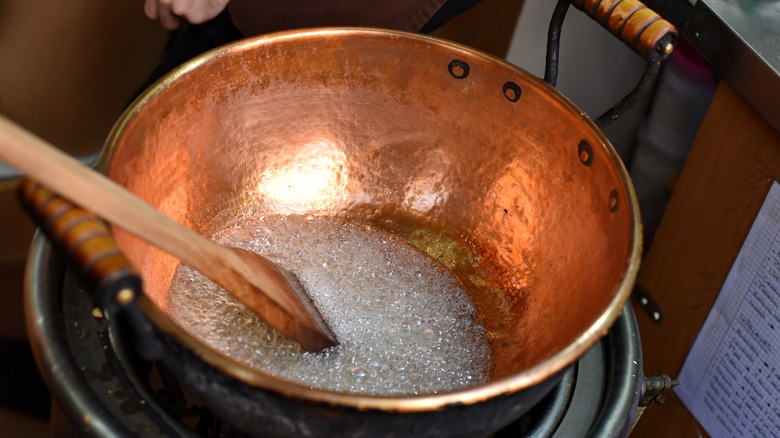How To Make Sweets Without A Candy Thermometer
Some people believe making candy without a candy thermometer is impossible, but that simply isn't the case. While it's true that a candy thermometer makes it easier to flawlessly caramelize sugar by giving you precise temperatures, there are other methods that are just as reliable. Confectioners who lived prior to the invention of thermometers used something called the cold water test.
The cold water test involves using a bowl of ice water to see what stage your sugar syrup has reached. As sugar syrup becomes hotter and hotter, it goes through seven stages of hardness, each of which can be used to make different types of candy. Dropping heated sugar syrup into the water cools it quickly so you can determine which stage it's in and whether it needs to be heated further for the recipe you're making.
You'll need to perform the test multiple times while heating your sugar, so prep an ice bath beforehand. Rather than putting ice directly in your testing water, fill a large bowl with ice, nestle a smaller bowl inside it, then fill the second bowl with cold water. You'll get more precise results that way since the sugar won't make direct contact with the super-cold ice.
Performing the cold water test
As you're cooking it, the molecules in sugar break up, then realign into new structures that become apparent as the sugar cools. That's where the water test comes in. The sugar progresses through seven stages as it gets hotter. Using a spoon, you can drop a little bit of the hot sugar syrup into your cold water bath every three to five minutes to see what stage it's in.
During the thread stage (223 to 235 degrees Fahrenheit), it forms thin, flexible threads perfect for candying bacon or fruit. The soft ball stage (235 to 245 degrees Fahrenheit) sees it form a soft ball of sugar forms, then deflates quickly. Contrast that with the firm ball stage (245 to 250 degrees Fahrenheit), during which the sugar ball doesn't deflate but squishes easily between your fingers. Quickly thereafter, it reaches the hard ball stage (250 to 266 degrees Fahrenheit), where it has some give but retains its shape. Next comes the soft crack stage (270 to 290 degrees Fahrenheit) in which the sugar forms thick, strong, flexible threads that hold together easily. The hard crack stage (300 to 310 degrees Fahrenheit) is similar, but the threads become hard and brittle, making them prone to cracking. The final stage is the caramel stage (320 to 350 degrees Fahrenheit), which is the point at which your sugar becomes a beautiful amber-brown and gives off a rich, buttery scent, perfect for homemade ice cream.

